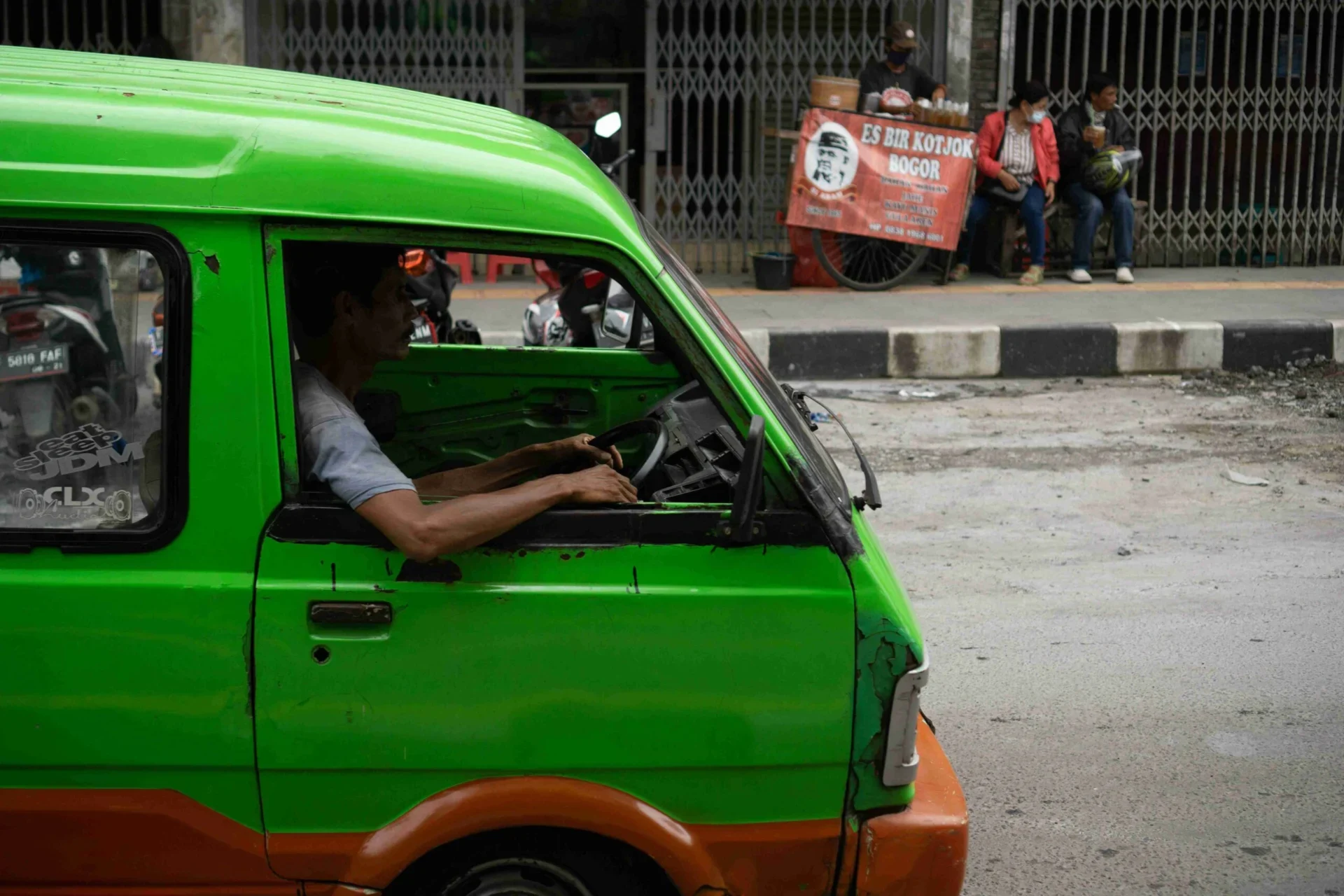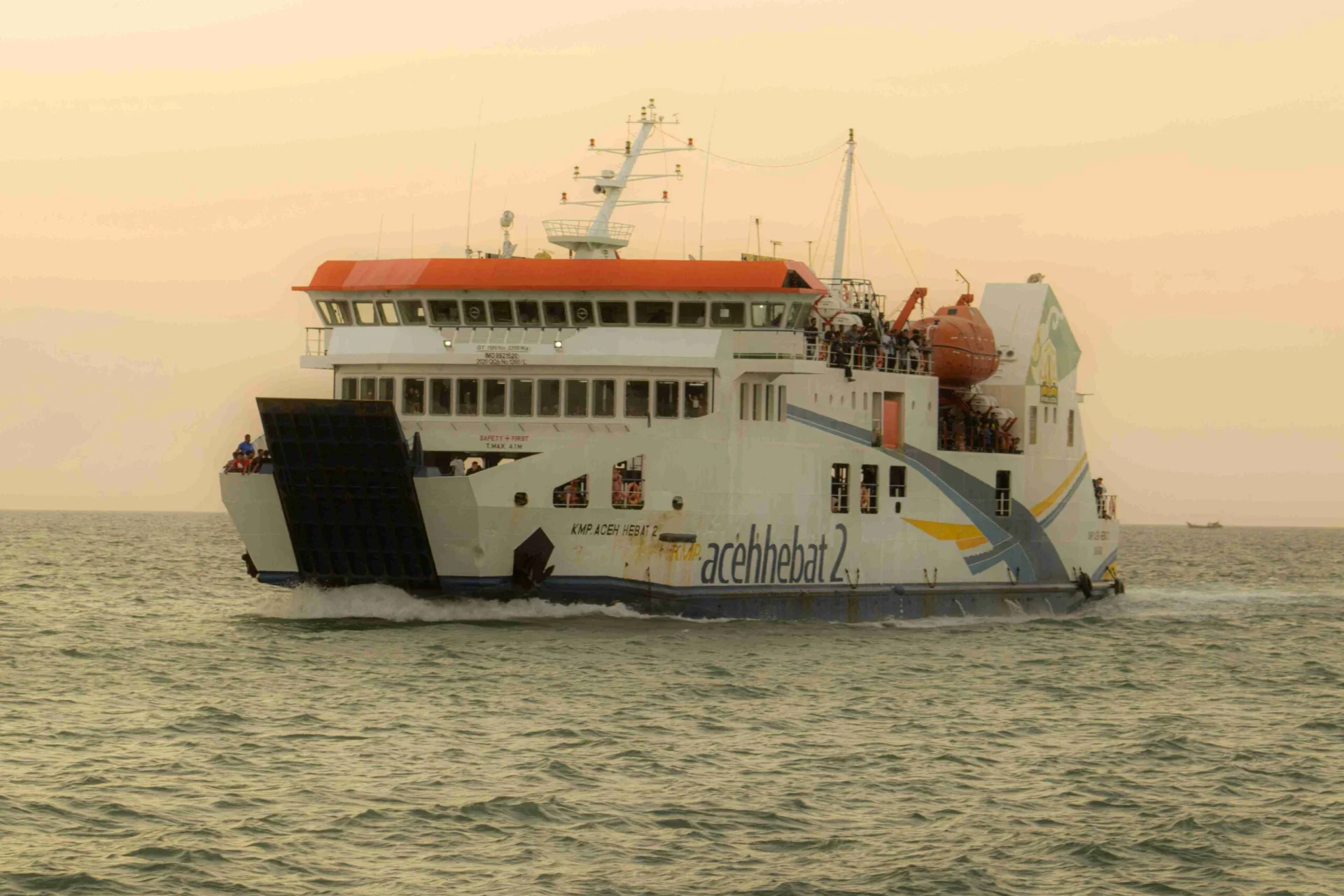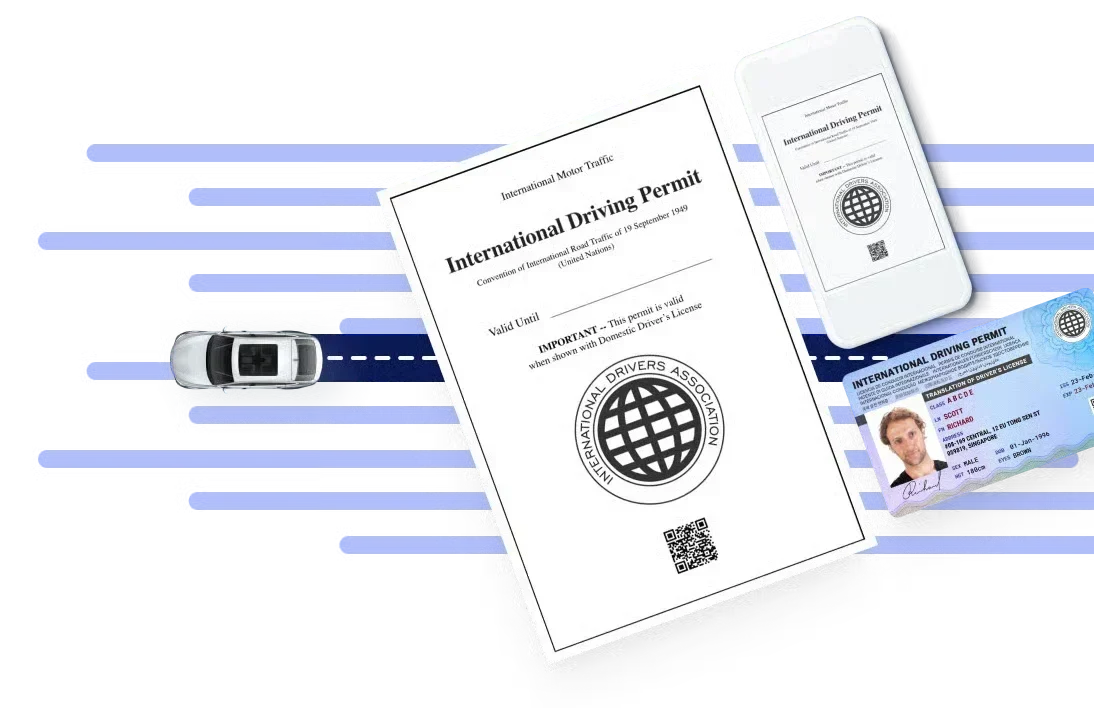Navigating Indonesia’s public transportation system can be both exhilarating and challenging. This diverse archipelago offers a wide range of options, from modern bus rapid transit in Jakarta to traditional pedicabs in smaller towns. Whether you’re island-hopping by ferry or weaving through city traffic on a motorbike taxi, understanding your choices is key to a smooth journey.
This guide breaks down the most common modes of public transport in Indonesia, their costs, and what to expect, helping you make informed decisions as you explore this vibrant country.

Source: Photo by Galuh hari setiawan on Unsplash
Buses
Buses are a popular and affordable means of transportation in Indonesia, serving both local and long-distance routes. However, the quality of service can vary significantly depending on the bus class.
- Economy Buses: These are the most basic and budget-friendly options. They often make frequent stops, can be crowded, and may lack air conditioning. While they’re generally safe, the journey can be uncomfortable and time-consuming.
- Express Buses: These buses offer a more comfortable experience with air conditioning and fewer stops. They’re a good choice for budget travelers who want to avoid the inconveniences of economy buses.
- Luxury Buses: Luxury buses are the way to go for ultimate comfort and convenience. They often feature reclining seats, entertainment systems, and onboard snacks. However, they can be more expensive than other options.
The cost of bus travel in Indonesia varies, with economy buses generally costing between Rp 50,000 ($3.23) and Rp 80,000 ($5.18), while luxury buses are more expensive, costing between Rp 150,000 ($9.72) and Rp 200,000 ($12.95).
Popular Bus Terminals From Jakarta
If you’re starting your journey in Jakarta, here are the bus terminals you should head to:
- Kalidera: Serves western Jakarta.
- Kampung Rambutan: Serves southern and southwestern Jakarta.
- Pulo Gadung: Serves central and eastern Java, Sumatra, and Bali.
- Lebak Bulus: Serves long-distance routes to Yogyakarta, Surabaya, and Bali.
Safety Tips: While bus travel in Indonesia is generally safe, taking precautions is always a good idea. Avoid carrying excessive luggage, keep an eye on your belongings, and be aware of your surroundings.
Angkot (Mini Bus)
Angkot, or “city transport,” is a popular mode of transportation in Indonesia. These modified SUVs offer a more flexible and accessible alternative to traditional buses. Often referred to as “mikrolet,” angkots are widely available throughout cities, serving numerous routes. It can accommodate seven (7) passengers.
While affordable, angkots can be less efficient than other options, especially during peak hours. They often wait for passengers at busy intersections or markets, which can lead to delays. Other transportation methods might be more suitable for travelers who prioritize speed and convenience.
Before ride-hailing apps became popular, angkots were the most affordable and widely used form of public transportation. Their low fares, starting at just Rp 2,000 ($0.12), made them popular.
Transjakarta Busway (BTR)
If you are in Jakarta, the Transjakarta Busway (BTR) could be an efficient bus service. Tickets can be purchased at vending machines or ticket booths, and fares start at Rp 2,000 ($0.12) during off-peak hours and Rp 3,500 ($0.22) rupiah during peak times.
Bajaj And Ojek
The bajaj, a three-wheeled vehicle similar to the tuk-tuk found in other Southeast Asian countries, is common in urban centers like Jakarta and Surabaya. The bajaj offers a unique and nostalgic experience with its colorful exterior and open-air design.
It’s an excellent option for short trips or sightseeing, providing a leisurely and immersive way to explore the city. Expect to pay around Rp 10,000 ($0.64) for a short ride. Keep in mind that bajajs have open sides, so be prepared for rain and potential exhaust fumes.
However, for those seeking a more adventurous and efficient mode of transportation, the ojek is the way to go. These motorcycle taxis are ubiquitous in Indonesian cities, offering a fast and flexible way to navigate through traffic-laden streets. You may pay around Rp 4,000 ($0.25) per kilometer for this motor taxi.
Ojek is now powered by the ride-hailing service Go-Jek. While traveling, you can download the Go-Jek app and book a motor taxi for a convenient ride around Indonesia.

Source: Photo by K Munggaran on Unsplash
Becak (Pedicab)
Many Indonesian cities, like Jakarta and Medan, offer motorized trishaws, which are a convenient and affordable mode of transportation. These motorized trishaws are a great option for short trips, starting at around Rp 10,000 ($0.64). However, it’s important to note that they are not available on the island of Bali.
Taxis
Taxis are a convenient and widely available mode of transportation in Indonesian cities and towns. The most prominent taxi service in the country is the Blue Bird Group, which operates 24 hours a day. In popular tourist destinations like Bali, you’ll find other reputable taxi companies like Bali Taxi.
Fares and Regulations
- Base fare: Taxi fares typically start at around Rp 7,500 ($0.48)
- Distance-based charges: After the initial base fare, you’ll be charged an additional fee for the distance traveled. This is usually around Rp 400 ($0.02) per 100 meters.
- Metered taxis: All official taxis in Indonesia should have meters to ensure accurate fare calculation. However, it’s not uncommon for some taxi drivers to offer flat rates, especially to tourists. Be cautious of drivers who refuse to use the meter, as they may attempt to overcharge you.
- Negotiation: While it’s generally recommended to insist on using the meter, in some cases, you may need to negotiate a fair fare, particularly for longer distances or off-peak hours.
Tips for Using Taxis
- Research reputable companies: Stick to well-known taxi services like Blue Bird to ensure reliability and safety.
- Confirm the fare beforehand: Before starting your journey, agree on the fare with the driver, especially if they offer a flat rate.
- Check for a meter: Always verify that the taxi has a functioning meter.
- Pay attention to the route: Ensure the driver takes the most direct route to your destination.
Be cautious of drivers who may attempt to overcharge you, especially in tourist areas. If you suspect a scam, report it to local authorities.
Other Ride-Hailing Apps
In recent years, ride-hailing apps like Grab Car and Go-car have become popular alternatives to traditional taxis in Indonesia. These services offer a convenient and affordable way to get around many cities.
- Go-jek: Aside from the motor taxi discussed earlier, this app also offers car rides (Go-car). The base fare for a Go-car is typically Rp 15,000 ($0.97), which is pricier than a motor taxi.
- Grab Car: Similar to Go-car, Grab Car provides car ride services. The base fare is generally Rp 10,000 ($0.64), with an additional charge of Rp 4,500 ($0.29) per kilometer.
Keep in mind that fares may increase during peak hours or in high-demand areas. Additionally, Grab Car, Go-car, and Go-jek may not be available in all parts of Bali.
Overall, these ride-hailing apps offer a convenient and often more affordable option than traditional taxis, making them a popular choice for locals and tourists in Indonesia.
Boats and Ferries
Taking a boat is a convenient and scenic option for traveling between Indonesian islands, such as Bali and Lombok. Various boat services are available, ranging from fast boats to slower ferries.
Your specific route and boat type will influence the travel time and cost. Generally, ferry rides may range between Rp 150,000 ($9.72) and Rp 250,000 ($16.20) per person and have departure schedules, usually in the mornings (8 AM to 11 AM).
Local ferries offer a budget-friendly way to travel to more remote islands like Flores. However, they may take longer than faster options.
It’s important to note that many ferries in Indonesia can accommodate cars and buses. If you’re taking a long-distance bus journey, you may find yourself traveling by ferry at some point during your trip.

Source: Photo by teguhyudhatama on Unsplash
Rails
While Indonesia does have a few rail networks, they’re generally not a popular choice among tourists due to their often uncomfortable and time-consuming journeys. The most extensive rail network is on the island of Java, connecting major cities like Jakarta, Bandung, Yogyakarta, and Surabaya.
This can be a viable option for those seeking a more scenic or leisurely way to travel between these destinations. However, train travel on Java can still be somewhat basic compared to other transportation options.
Some local train networks are also available on the island of Sumatra and in the northern region of Aceh. However, these trains tend to be more expensive than buses and may offer a less comfortable experience.
Renting A Vehicle
For those seeking more flexibility and privacy, renting a private car or motorbike is an option in Indonesia. Hiring a car with a driver typically costs around Rp 300,000 ($19.44) per day, excluding fuel. In tourist areas like Bali, renting a motorbike or scooter is a popular and often cheaper alternative. While a global driving permit in Indonesia is legally required, some establishments may rent vehicles without it. However, to be sure, you must secure one before your trip.
It’s also important to note that not wearing a helmet can invalidate your insurance and increase the risk of accidents, which are common in Indonesia. Given the abundance of other affordable transportation options, renting a personal vehicle may not always be necessary.
Final Thoughts
Indonesia’s public transportation system reflects the country’s diversity, offering a mix of modern conveniences and traditional charm. While exploring this system can present challenges, it also provides unique opportunities to experience local culture and connect with fellow travelers and residents.
By understanding your options – from buses and trains to boats and ride-hailing apps – you can choose the best way to explore this fascinating archipelago. Remember, in Indonesia, the journey itself is often as memorable as the destination. Plan wisely, stay flexible, and enjoy the ride.
Frequently Asked Questions
What phrases should I learn when using public transportation in Indonesia?
Here are some essential Indonesian phrases that will be helpful when using public transportation:
Asking for Directions:
- Bolehkah saya bertanya? Can I ask a question?
- Di mana… (place)? Where is… (place)?
- Bagaimana cara pergi ke… (place)? How do I get to… (place)?
- Bisakah Anda menunjukkan jalan ke… (place)? Can you show me the way to… (place)?
Asking for Information:
- Berapa harganya? How much does it cost?
- Jam berapa keberangkatannya? What time is the departure?
- Apakah ada tiket yang tersedia? Are there any tickets available?
On the Bus or Train:
- Di mana halte berikutnya? Where is the next stop?
- Bolehkah saya turun di halte depan? Can I get off at the next stop?
- Di mana toiletnya? Where is the restroom?
Taxi and Ojek (Motorcycle Taxi):
- Berapa ongkosnya? How much is the fare?
- Bisa antar saya ke… (place)? Can you take me to… (place)?
- Nyalakan meternya. Turn on the meter.
Ferry:
- Di mana loket tiket kapal? Where is the ferry ticket counter?
- Jam berapa keberangkatan kapal? What time does the ferry depart?
- Di mana tempat duduk saya? Where is my seat?
Is public transportation safe for solo travelers?
Yes, public transportation in Indonesia is generally safe for solo travelers. While there are always precautions to take, most people using public transport in Indonesia are friendly and helpful. Here are some tips for staying safe:
- Pay attention to your belongings and avoid displaying valuables openly.
- If something feels off, don’t hesitate to leave the situation.
- Stick to well-traveled routes, especially at night.
- Knowing a few basic phrases can help you communicate with locals and get assistance if needed.
- Keep your belongings close to you and avoid leaving them unattended.
- While it’s generally safe, it’s always better to be cautious, especially in unfamiliar areas.
By following these tips, you can confidently enjoy your travels in Indonesia.
Is there a unified public transportation card for Indonesia?
While there isn’t a nationwide unified card, some cities have their own systems. In Jakarta, for example, you can use the Jakarta One (JakOne) card for Transjakarta buses, MRT, and other services. However, for most other cities and inter-city travel, you’ll need to purchase tickets separately for each mode of transport.
Are there any women-only transportation options in Indonesia?
Yes, in some areas. For instance, Jakarta has pink-colored women-only carriages on some train lines during peak hours. Some ride-hailing apps also offer options to request female drivers for women passengers.
How do I stay updated on any changes or disruptions to public transportation services?
Social media can be very useful for real-time updates. Many transportation services have official Twitter or Instagram accounts where they post updates. Apps like Google Maps or Moovit can also provide real-time information in some areas. For major disruptions, local news websites often carry reports.






